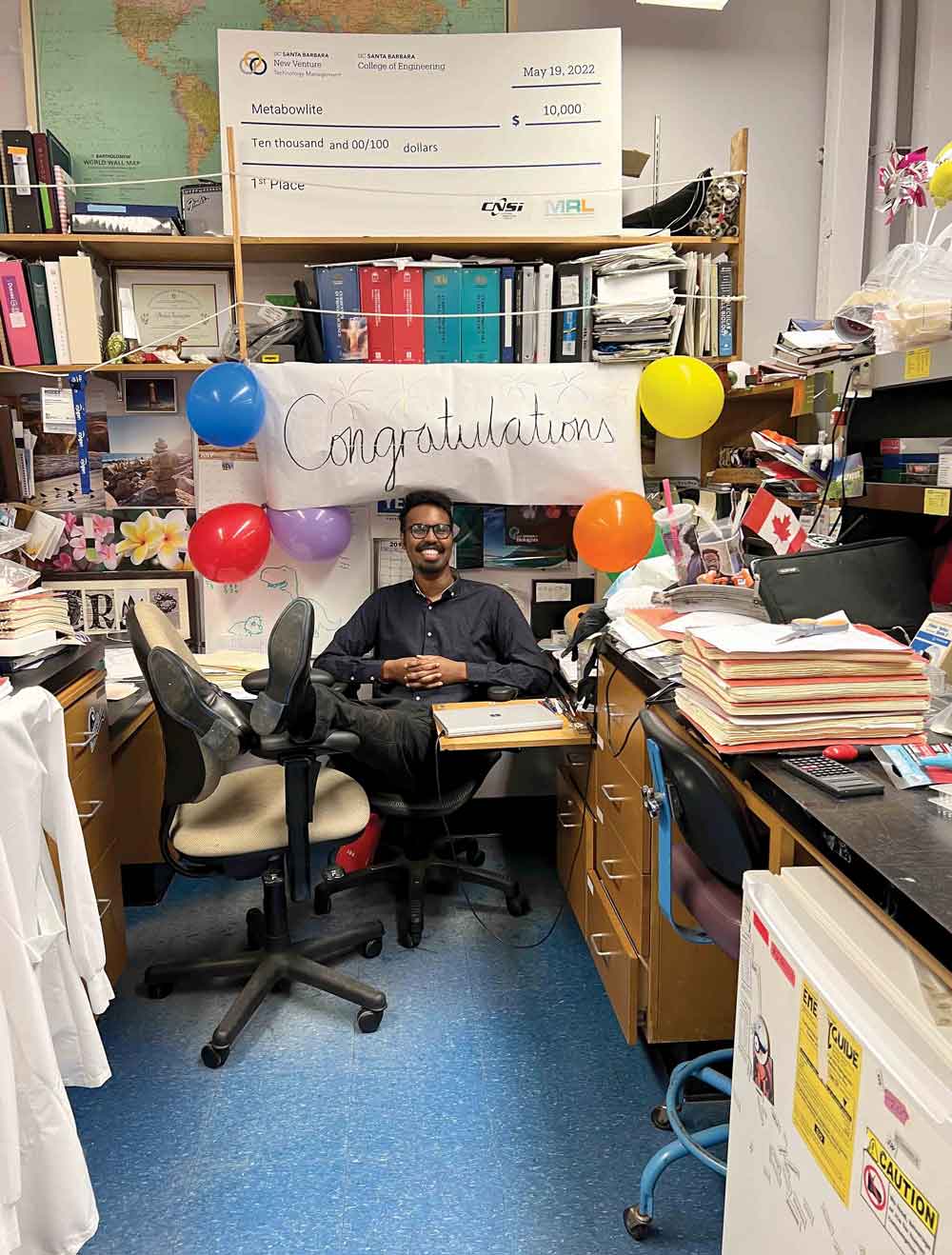Mohamed Faynus | ’16 M.S. Biotechnology
By Kim Lamb GregoryStem cells are the latest weapon on the horizon in the fight against blindness, and CSUCI alumnus Mohamed Faynus is at the helm of some promising research for blindness caused by age-related macular degeneration.
“We completed a Phase I/2A trial,” Faynus said. “We started with patients who were legally blind. We’re excited about the results because 27% of the patients showed improved vision, and 60% either improved or remained stable.”

Faynus is part of a team at the Dennis O. Clegg Lab in the UCSB Center for Stem Cell Biology and Engineering. He and his fellow scientists are developing stem cell technology targeting blindness caused by so-called “dry” macular degeneration, which makes up the majority of macular degeneration diagnoses.
“Mohamed is just great in the lab,” Clegg said. “He is so curious about science and so hardworking and enthusiastic. He’s always full of ideas and new projects. It’s been a pleasure to work with him.”
Faynus became intrigued with the possibilities connected with stem cell technology through CSUCI’s Bridges to Stem Cell Research program, which is funded through the California Institute for Regenerative Medicine (CIRM). Launched by Professor of Biology Nitika Parmar, the program allows graduate students to work in paid internships while studying stem cell technology at prestigious medical institutions in California—in this case, the Clegg lab.
Faynus earned a Bachelor of Science in Forensic Science from the University of Toronto. His family immigrated to Canada from Somalia when Faynus was five years old. Impressed with CSUCI’s stem cell program, he earned a Master of Science in Biotechnology from CSUCI, and in the summer of 2023, he earned his Ph.D. in Biomolecular Science and Engineering from the University of California, Santa Barbara.
Faynus is now a post-doctoral fellow in the Clegg lab working part time for two different biotechnology companies. They are creating a patch made of stem cell-derived retinal pigment epithelial (RPE) cells. When the cells are healthy, they enable photoreceptor cells of the retina to detect light, but when they begin to atrophy, it can lead to impaired vision or for many, blindness.
The patch can be implanted in the back of the eye to try to stimulate the growth of healthy RPE cells.
“The capability of a stem cell is remarkable,” Faynus said. “With stem cell technology we can study human diseases in a dish — in this case, those that affect the retina. Maybe within the next decade or so we’ll see the next wave of therapy options reach patients.”
